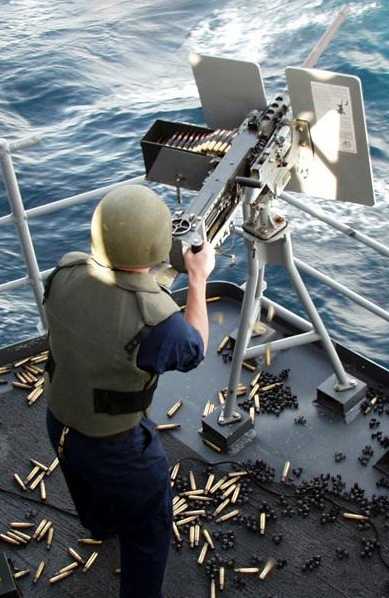
Built since the 1930s, the 0.50" (12.7 mm) caliber Browning Machine Gun (BMG) M2 (Ma Deuce) is still one of the world's most widely used heavy machine guns. Employed today on many USN ships for action against hostile small surface craft and commando-type attacks which might occur in restricted waters.
This gun was initially designed near the end of World War I as an aircraft weapon. The design was modified for land use after the war and then designated as the Model 1921 machine gun. In 1932 the design was modified again and this design became the M2. The M2HB (HB = Heavy Barrel) version, introduced during World War II, is the most widely used model today and denotes guns using a thicker, air-cooled barrel, which was adopted in order to increase barrel life.
In the 1930s, these guns in various forms on simple AA mountings were in use on most USN warships. However, at about the start of World War II, the Navy quickly determined that they were almost useless against modern aircraft and replaced them as rapidly as possible with the 20 mm Oerlikon AA MG.
In the 1930s and 1940s, the US Navy used a water-cooled version on ships while aircraft and small craft such as PT Boats used a lightweight air-cooled version. This latter version was the most common US aircraft weapon employed during World War II, used on both US Army and US Navy aircraft. The US Army fielded both a water-cooled model and an air-cooled version with a slower rate of fire.
Today, the M2HB version is widely used by countless nations and ammunition for these weapons is currently manufactured in at least twenty countries. All versions of this MG are recoil-operated and fire with a closed bolt, although at least one company is currently offering an adapter kit to convert this weapon into an open-bolt type.
In the late 1930s and 1940s the Belgian firm of Herstal obtained a license and built guns designed to accept Hotchkiss 13.2 mm ammunition. Many of these were used on French warships of the period.
As a personal note, I fired this weapon a few times during my military service. Impressive firepower and quite reliable, although somewhat on the heavy side. Barrel changes are complicated with the need to adjust barrel head spacings before the weapon can be fired. There have been efforts to produce quick change models, but these are not widely used.
The US Navy and Marine Corps have purchased a small quantity of the 0.50" (12.7 mm) M3M FN Herstal MG as a replacement for the aircraft version of the BMG and the Army is currently evaluating a General Dynamics replacement firing 25 mm "smart" ammunition. However, the M2 is plentiful and cheap and will continued to be in wide service use for quite some time.
In early 2011, the U.S. Department of Defense began modifying 6,000 existing M2s in order to upgrade them to the current M2A1 standard. These modifications include eliminating the need to make barrel head spacing adjustments. As mentioned above, this has long been seen as the major flaw of this weapon, as mis-adjustments would cause the gun to jam and often injured the gunner in the process. Another part of this upgrade is the quick change barrel modification, greatly reducing the time it takes to replace worn barrels. Thousands of new M2A1 weapons are also being manufactured but most of the M2A1s will be created by upgrading older weapons.
The data that follows is organized as follows: "Air-cooled" refers to the modern-day "heavy barrel" (M2HB) version which is currently employed by the USN as a light anti-boat weapon. "Water-cooled" refers to the 1930s-1940s naval version. "Aircraft" refers to the 1930s-1940s perforated barrel jacket version used on aircraft and small warships. This datapage is not meant to be a complete listing, as there have been many variations of the M2 during its long career, with several models in service today. Instead, this datapage is intended to provide information on the most common versions used for naval applications.
| Designation | 0.50" (12.7 mm) M2 Browning Machine Gun (BMG)
Navy Fixed Right Hand Feed: 1005-00-122-9339 Navy Fixed Left Hand Feed: 1005-00-122-9368 |
|---|---|
| Ship Class Used On | Almost all warships 1930s
Many warships 2000s |
| Date Of Design | Original design: about 1920
M2 version: 1932 |
| Date In Service | about 1933 on US Navy ships |
| Gun Weight | Air-cooled: 84 lbs. (38 kg)
Water-cooled: 100.5 lbs. (45.6 kg), 121 lbs. (54.9 kg) with water Aircraft: 61 lbs. (27.7 kg) |
| Gun Length oa | Air-cooled: 61.4 in (156 cm)
Water-cooled: 65 in (165 cm) Aircraft: 37 in (0.940 m) |
| Barrel Length | Air-cooled: 45 in (1.143 m)
Water-cooled: N/A Aircraft: N/A |
| Rifling Length | Air-cooled: 41.9 in (1.064 m)
Water-cooled: N/A Aircraft: N/A |
| Grooves | 8 |
| Lands | N/A |
| Twist | N/A |
| Chamber Volume | 1.5 in3 (24.6 cm3) |
| Rate Of Fire 1 | Air-cooled: 550 rounds per minute cyclic
Water-cooled: 450 - 600 rounds per minute cyclic Aircraft: 750 - 850 rounds per minute cyclic |
- ^The practical rate of fire for these weapons varies widely depending upon the model and application. For the HB version, infantry training in the 1970s was to fire bursts of 8-10 rounds at a time, each followed by a short pause. Shipboard gunners of the 1930s-40s using water-cooled versions were trained to fire continuously in order to be able to "walk" the tracers onto the target. As the practical range against aircraft for this weapon was approximately 1,500 yards (1,400 m), an aircraft approaching at 200 knots would be under fire for about 14 seconds, or the rough equivalent of one belt of 100 rounds.
| Type | Fixed |
|---|---|
| Weight of Complete Round | Varies depending upon ammunition type and weapon version
Ball: 0.255 lbs. (0.116 kg) |
| Projectile Types and Weights | Ball: 1.71 oz (48.5 gm) See External Links |
| Bursting Charge | N/A - Solid bullet |
| Projectile Length | N/A - Complete round 5.45 in (13.84 cm) |
| Propellant Charge | 0.54 oz (15.3 gm) NC tube |
| Cartridge | 0.5 x 3.9 in (12.7 x 99 mm) |
| Muzzle Velocity | Air-cooled 1940s: 2,820 fps (860 mps)
Air-cooled Modern: 2,910 fps (887 mps) Water-cooled: 2,930 fps (893 mps) Aircraft: 2,840 fps (866 mps) |
| Working Pressure | about 23.0 to 29.0 tons/in2 (3,600 kg/cm2 to 4,550 kg/cm2) |
| Approximate Barrel Life | Air-cooled: 3,000 rounds
Others: N/A |
| Ammunition stowage per gun | Ammunition is usually supplied in 100 round belts. These can be joined together to make longer belts as necessary. |
| Gun Type | Surface Range (effective) | Surface Range (maximum) | AA Ceiling (effective) | AA Ceiling (maximum) |
|---|---|---|---|---|
| 1940's Water-cooled | 2,600 yards (2,400 m) | 7,400 yards (6,770 m) | About 5,000 feet (1,524 m) | About 15,000 feet (4,570 m) |
| Modern Air-cooled | 2,200 yards (2,000 m) | 7,400 yards (6,770 m) | --- | --- |
| Designation |
1930s-1940s
Naval water-cooled Mount: Mark 3 Army Anti-aircraft Mount: M63 Army Quad Mount: Mark 31 1a Modern Versions
|
|---|---|
| Weight | M3 Tripod: about 44 lbs. (20 kg)
Others: N/A |
| Elevation | Mark 3: -10 / +80 degrees
Others: N/A |
| Rate of Elevation | Manually operated, only |
| Train | 360 degrees |
| Rate of Train | Manually operated, only |
| Gun Recoil | N/A |
- ^The Mark 31 Quad was an Army mounting used late in World War II on a few aircraft carriers as a "last-ditch" anti-kamikaze weapon. It was almost totally ineffective and was removed from all ships shortly after the war ended. See photographs below.
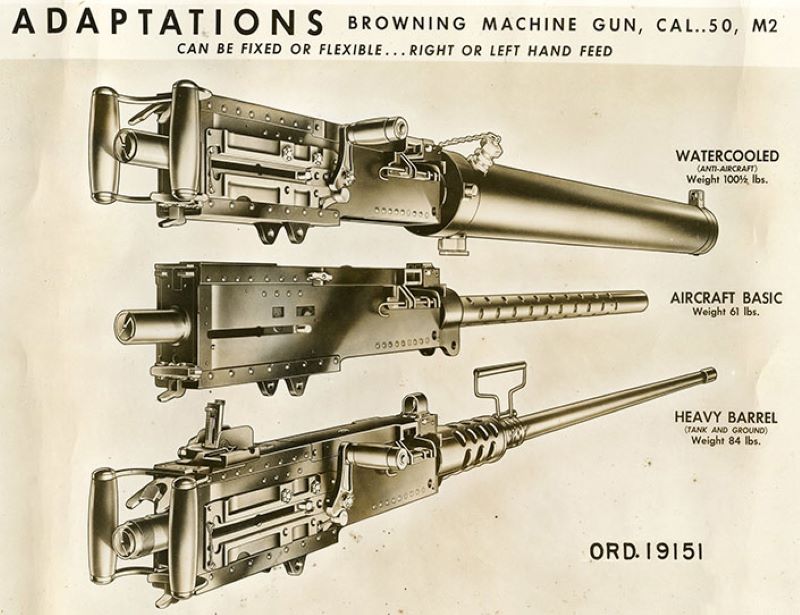
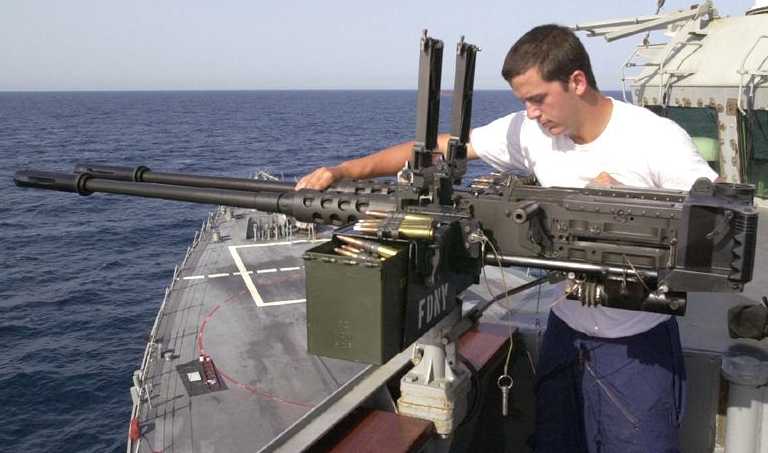
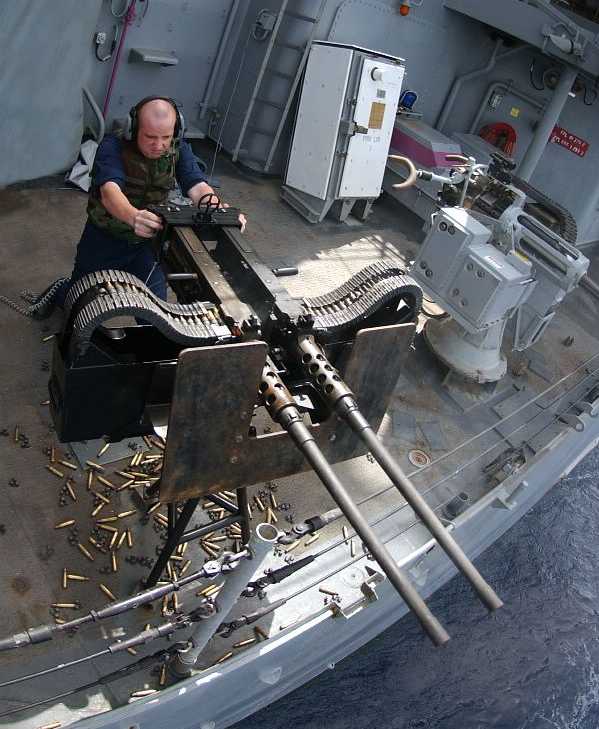
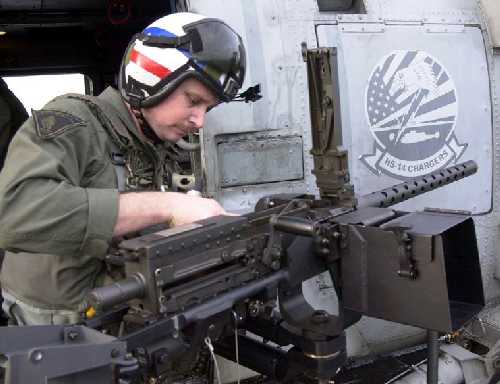
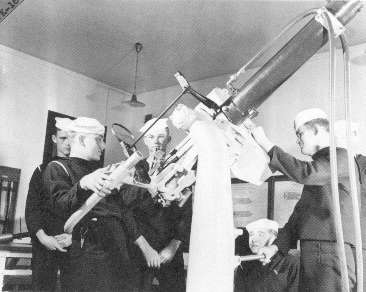
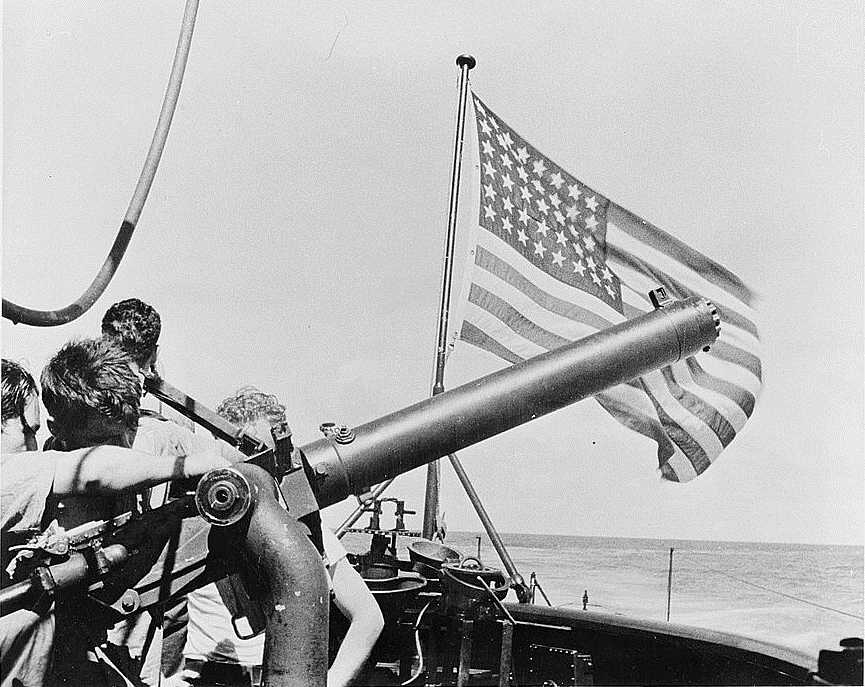
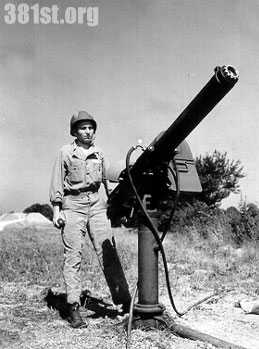
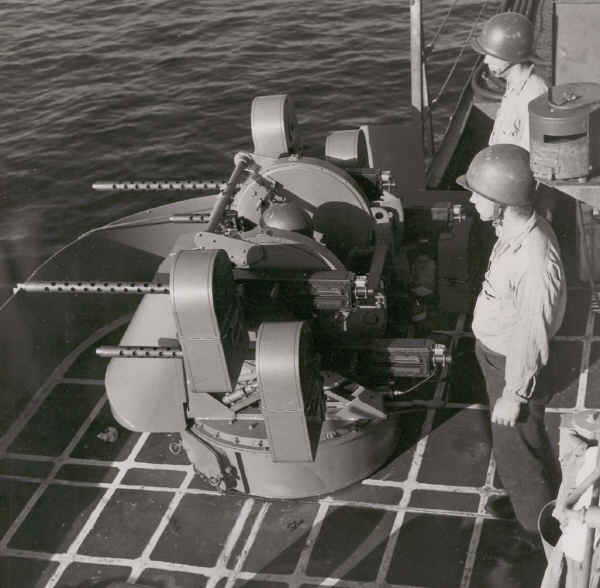
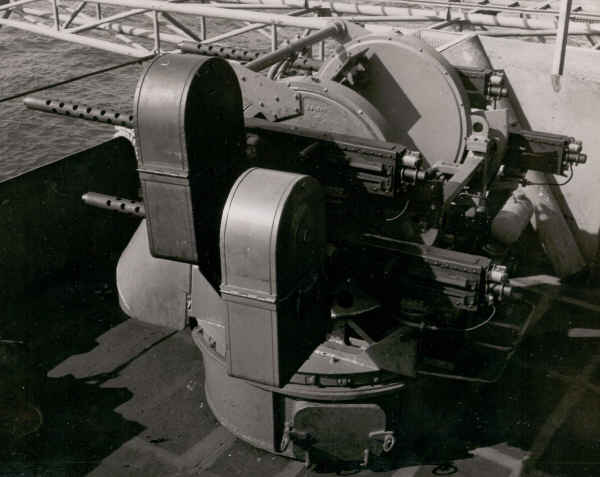
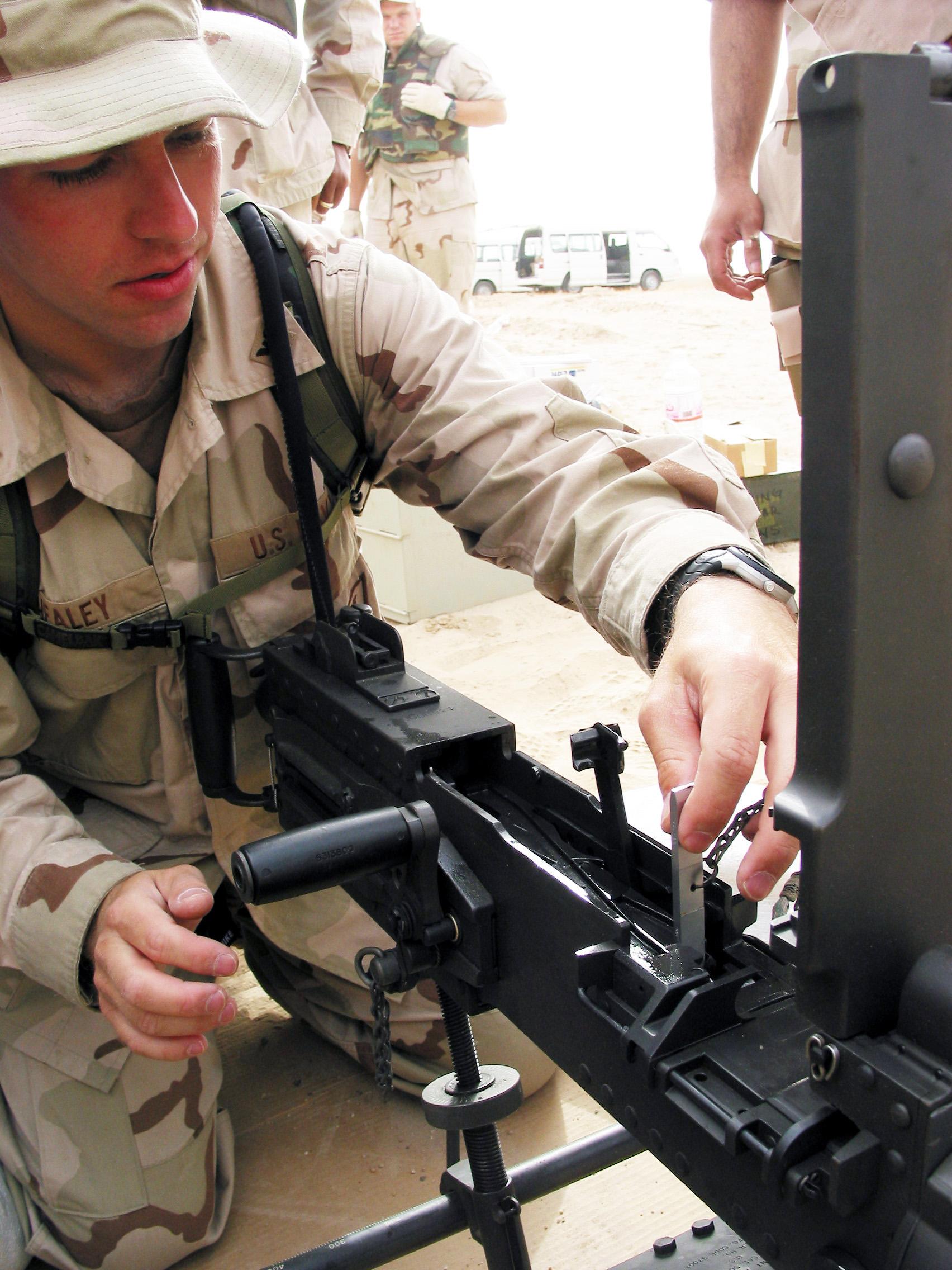
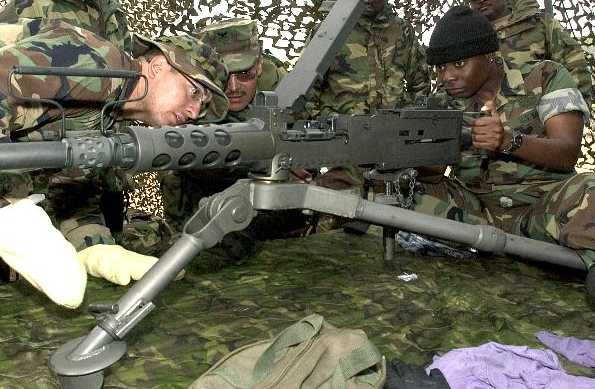
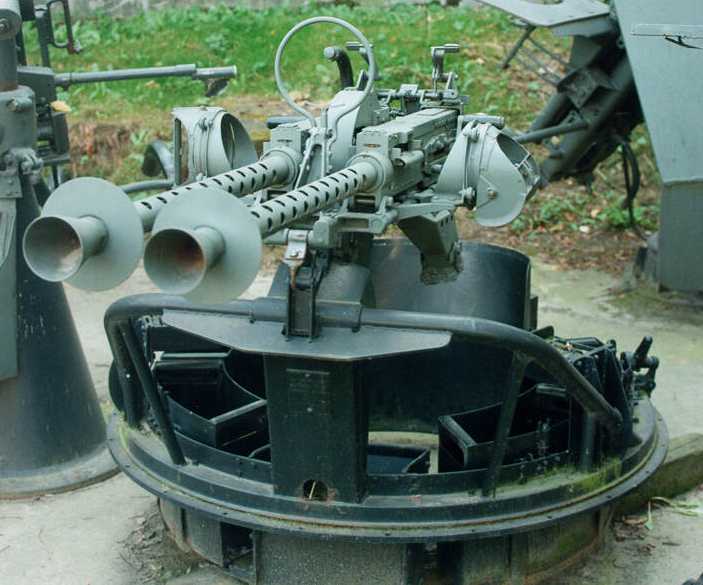
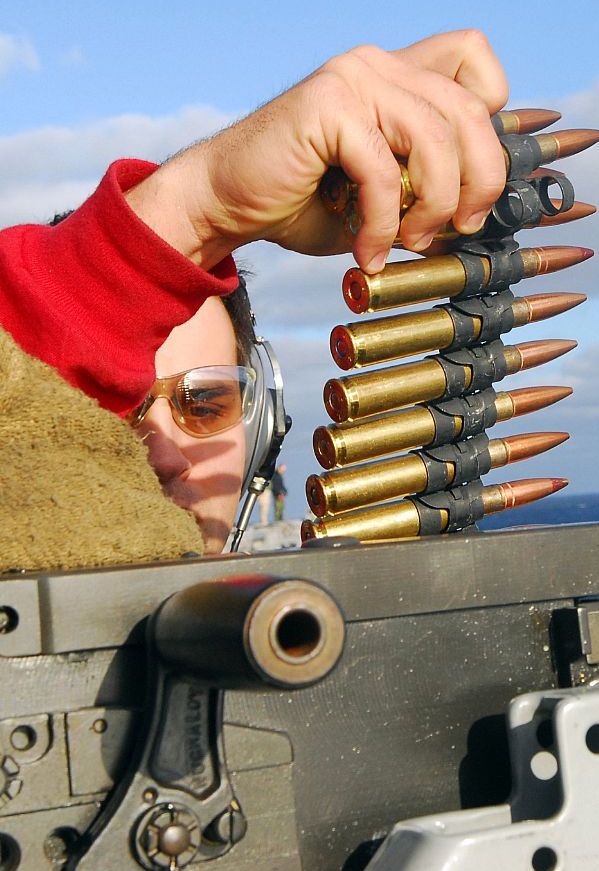
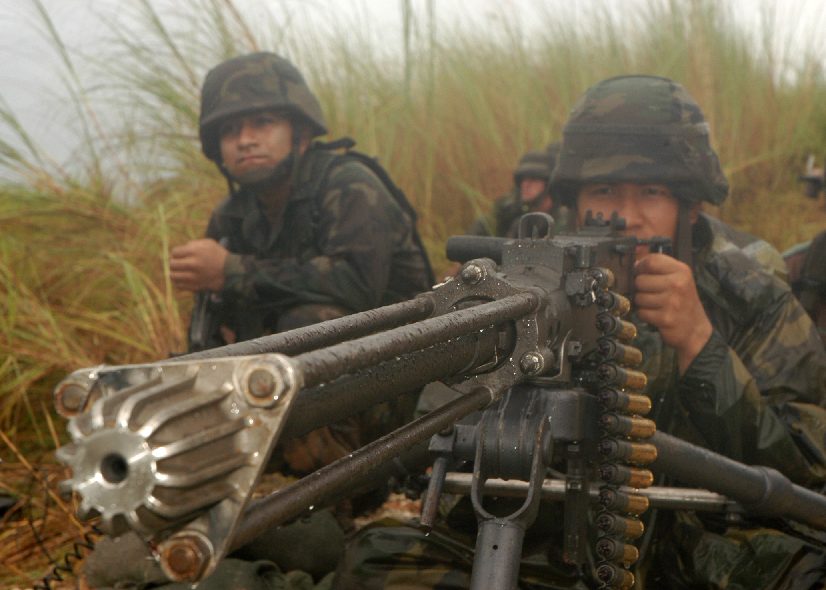
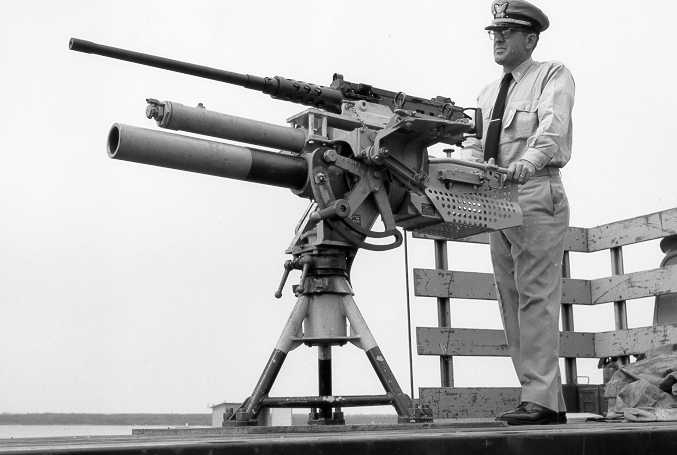
"Naval Weapons of World War Two" by John Campbell
"The Naval Institute Guide to World Naval Weapon Systems 1991/92" by Norman Friedman
"Iowa Class Battleships" by Robert F. Sumrall
---
"Technical Manual for Machine Guns, Caliber .50, Heavy Barrel" TM 9-1005-213-23&P 15 March 2002, issued by Departments of the Army, Air Force, Marine Corps and Navy - Navy SW 361-AC-MMM-010
---
US Navy Press Releases
---
Special help from Tracy White
---
Tony DiGiulian's personal files
0.50" (12.7 mm) ammunition at Gary W. Cooke's Website
Open-bolt upgrade for the BMG from Vinghøg
General Dynamics XM-307, the 25 mm replacement for the BMG
"The Forever Machine Gun" by James Dunnigan at The Strategy Page
06 September 2007 - Benchmark
27 March 2010 - Added photograph of submarine mount
06 September 2016 - Converted to HTML 5 format
27 February 2017 - Added comments on the M2A1 upgrade
23 February 2018 - Reorganized notes
10 March 2020 - Updated to current template
14 September 2022 - Corrected typographical error, added photograph of 81mm/.50 cal combination
23 July 2023 - Added comparison photograph of BMG types
